11 Proven Benefits Of
Emotion Code Healing
The Truth About Emotionally-Empowered Individuals
11 Proven Benefits Of
Emotion Code Healing
The Truth About Emotionally-Empowered Individuals
11 Proven Benefits Of Emotion Code Healing
The Truth About
Emotionally-Empowered
Individuals
Table Of Contents
- What Are The 11 Proven Benefits Of Emotion Code Healing?
- What Is The Emotion Code?
- 1. Holistic Approach
- 2. Emotional Release And Healing
- 3. Enhanced Emotional Awareness
- 4. Greater Emotional Resilience
- 5. Personal & Emotional Empowerment
- 6. Alleviation Of Physical Symptoms
- 7. Stress Reduction
- 8. Improved Relationships
- 9. Increased Clarity and Improved Decision-Making
- 10. Enhanced Intuition
- 11. Psychic Abilities
- Summary
What Are The 11 Proven Benefits Of Emotion Code Healing?
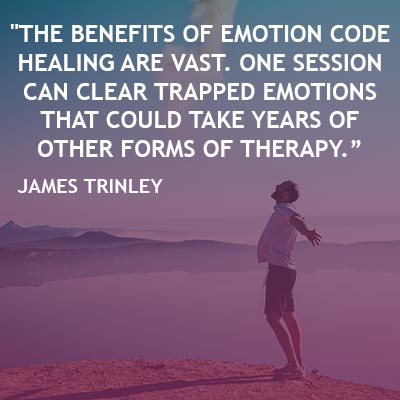
Benefits of Emotion Code Energy Healing.
As human beings, emotions are a part of our experience and always will be. The question is: do your emotions control you or are you in control of your emotions?
There are 11 proven benefits of Emotion Code Healing which can improve all areas of your life, not just how you respond and react in emotionally-charged situations.
The emotionally-empowered individual isn’t someone who only experiences positive emotions all the time. The emotionally-empowered individual is someone who embraces and transforms negative emotions in a positive and constructive way.
Negative, and even positive, emotions can “hijack”, or influence, the brain’s logic and rational thinking processes; This phenomenon is often referred to as emotional hijacking and is a concept popularized by psychologist Daniel Goleman in his book “Emotional Intelligence.”
Reacting to a person, or situation, in an emotionally charged state can later cause regret, embarrassment, guilt, shame, or other challenging emotions, on top of the negative emotions that caused the initial reaction.
Oftentimes, people will react this way due to triggers, trauma, and trapped emotions stuck in the body from past unresolved experiences. Many people go through years of therapy to help overcome their triggers, traumas and emotions, while one Emotion Code session can clear trauma, and the connected negative emotions, in as little as one session!
Trauma and trapped emotions can feel like a huge weight to carry. Many people have been carrying this weight for so long that they think it’s a natural part of their life. That is, until they experience the emotional release of an Emotion Code healing!
The 11 proven benefits of Emotion Code healing include emotional release, stress reduction, enhanced emotional awareness, improved relationships and intimacy, alleviation of physical symptoms, greater emotional resilience, personal and emotional empowerment, increased clarity, and enhanced intuition.
What Is The Emotion Code?
The Emotion Code is an energy healing modality that aims to identify and release trapped emotions to promote emotional, mental, physical, and even spiritual well-being. In one session enough trapped emotions can be cleared which could take years with other types of therapy; For this reason, the Emotion Code is considered to be the most powerful energy healing modality in the world.
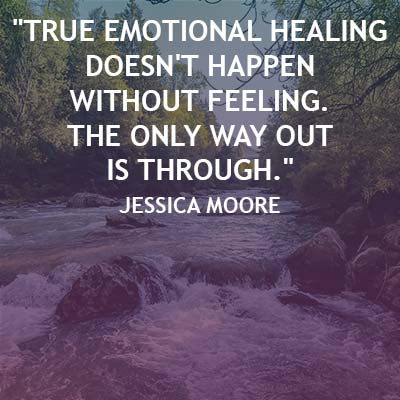
Clearing trapped emotions is the fastest and smoothest way through difficult emotions.
However, the Emotion Code doesn’t replace other forms of therapy but rather complements many of them. For example, Talk Therapy may not be able to directly clear trapped emotions, but it can be very helpful to have a professional to speak with during periods when uncomfortable emotions surface to be cleared from the body. The reason for this is that sometimes when we clear trapped emotions we have to feel them as they surface to be cleared.
When someone has a lot of trapped emotions or trauma it can be too much to handle. Furthermore, when someone is already overwhelmed with trapped emotions and/or trauma it creates fertile ground for new emotions to easily get trapped in the body.
Top 11 Signs You Have Trapped Emotions
- Chronic Physical Symptoms: Trapped emotions can manifest as physical ailments such as headaches, muscle tension, digestive issues, or fatigue, without an obvious medical cause.
- Unexplained Pain: Experiencing physical pain or discomfort that cannot be attributed to a specific injury or medical condition.
- Emotional Distress: Feelings of persistent sadness, anxiety, anger, or irritability that seem to have no clear cause or trigger.
- Mental Health Issues: Chronic stress, anxiety, depression, ADHD, or other mental health problems that do not respond well to traditional stress management and mental health therapies.
- Inability to Move On: Difficulty letting go of past traumas, grievances, emotional wounds, or holding onto grudges or past hurts long after the initial event has occurred.
- Mood Swings: Frequent and intense mood swings or emotional fluctuations that seem disproportionate to the circumstances.
- Feeling Stuck: A sense of being stuck in life, lacking life purpose, or unable to make progress or move forward despite efforts to do so.
- Disconnected: Feeling disconnected, dissociated, ungrounded, or like you’re on the outside looking in.
- Relationship Problems: Difficulty in forming or maintaining healthy relationships, particularly if unresolved emotions from past relationships are believed to be affecting the current ones.
- Sleep Disturbances: Insomnia or disrupted sleep patterns that are not caused by a medical condition or external factors.
- Low Self-Esteem: Persistent feelings of low self-worth or self-doubt that interfere with daily life and self-improvement.
Trapped emotions can cause people to feel “numb”, overwhelmed, stressed, in pain, or disconnected from themselves and others. Emotions become trapped in the body when they are too much to handle in the present moment.
For example, I had many trapped emotions from when my parents got divorced when I was only seven years old. I was too young to process such intense emotions so they got stuck and carried with me into my adult life. It seemed like every time I went to Talk Therapy I was stuck in a loop of continuously talking about the divorce.
However, once I was able to clear the emotions from that period in my life I started having breakthroughs in counselling, as well! The emotional charge and trauma from that time in my life were cleared and I was finally able to make progress in counselling.
Emotions can be incredibly uncomfortable, which is why they are so difficult to clear without the Emotion Code. The Emotion Code bypasses all obstacles and clears the trapped emotions directly.
The ultimate healing program, for those who can afford it, is to have an Emotion Code Practitioner, a Talk Therapist, and a Physical Therapist or Registered Massage Therapist. This combination addresses all layers as an Emotion Code Practitioner can clear the trapped emotions and traumas, a Talk Therapist can help move through them, and a Physical Therapist (or Massage Therapist) can address the physical tension caused by Trapped Emotions and Trauma.
In addition, a spiritual guide, or Shaman, can provide guidance, wisdom, and direction in navigating all these processes. A Shaman is someone who has been through the “healing journey” and can provide comfort, reassurance and protection along your path. Also, a Shaman may be required for those who believe there are negative spiritual, or psychic, influences affecting them.
I was certified in the Emotion Code in 2018 and have thousands of hours of practice positively, and radically, benefitting myself and others. The benefits of this energy-healing modality are vast. With everything I have learned and experienced, I created a list of the 11 benefits of the Emotion Code below:
1. Holistic Approach
The Emotion Code takes into consideration the interconnectedness of emotional, mental, physical, and spiritual well-being. This holistic approach aligns with the understanding that addressing emotional imbalances can contribute to overall health and vitality.
Emotional, mental, physical, and spiritual well-being are interconnected aspects of overall health. They influence and interact with each other in various ways, creating a holistic picture of an individual’s wellness. Here’s how they are connected:
Emotional And Mental Well-Being
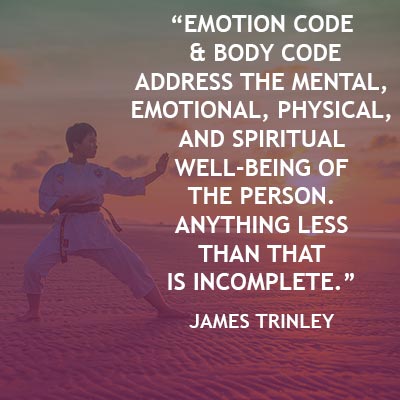
One of the benefits of Emotion Code and Body Code is that it incorporates mental, emotional, physical, and spiritual health. Everything is interconnected.
- Emotional Regulation: Emotional well-being involves understanding, managing, and regulating your emotions. When emotions are balanced and effectively managed, it positively impacts your mental state by promoting clarity of thought and decision-making.
- Mental Resilience: Emotionally healthy individuals often exhibit greater mental resilience, which is the ability to bounce back from challenges and setbacks. Positive emotional states can enhance your ability to cope with stressors and maintain a more optimistic mindset.
- Cognitive Function: Emotions can impact cognitive functions such as memory, attention, and problem-solving. High emotional distress can lead to difficulties in concentration and decision-making. It’s entirely possible that people with ADD, ADHD, or other types of mental illness that affect memory and attention may have trapped emotions that need to be cleared.
- Self-Esteem: Positive emotional experiences contribute to positive self-esteem and self-image, while negative emotions can lead to self-doubt and lower self-esteem.
Emotional And Physical Well-Being
- Stress Response: Unmanaged or chronic negative emotions can trigger the body’s stress response, releasing stress hormones like cortisol. Over time, this can impact physical health by contributing to issues like high blood pressure, cardiovascular problems, inflammation, digestive issues, and weakened immune function. While cortisol is essential for many bodily processes, excessive or prolonged elevation of cortisol levels can have a range of effects on the physical body, some of which can be detrimental.
- Immune System: Positive emotions have been linked to a stronger immune system, while negative emotions can weaken immune function, making the body more susceptible to illnesses.
- Inflammation: Chronic emotional stress is associated with increased inflammation, which is a risk factor for various chronic conditions such as heart disease, diabetes, and autoimmune disorders.
- Physical Symptoms: Unresolved emotional issues can manifest as physical symptoms, such as headaches, digestive problems, skin issues, muscle tension, and chronic pain. While the Emotion Code can clear underlying trapped emotions, the Body Code is very effective at dealing with physical issues that aren’t emotion-based.
Mental And Physical Well-Being
- Mind-Body Connection: Mental well-being directly impacts physical health. Chronic stress, anxiety, and depression have been linked to various physical health issues, including heart disease, gastrointestinal disorders, and chronic pain.
- Healthy Behaviours: Mental well-being influences lifestyle choices, including exercise, diet, sleep, and substance use. Good mental health can motivate individuals to engage in healthy behaviours that promote physical well-being.
- Quality of Life: Positive mental health contributes to a higher quality of life. When you feel mentally well, you’re more likely to engage in activities that promote physical health and overall happiness.
10 Aspects Of Spiritual Well-Being
Spiritual health is a dimension of overall well-being that relates to a person’s sense of connection to something greater than themselves. It is a subjective and deeply personal aspect of well-being that goes beyond religious beliefs or practices, although religion can be a significant component of spiritual health for some individuals. A Body Code Practitioner is also able to identify and remove any type of spirit/entity attachment which can cause problems, not just spiritually, but also physically, mentally, and emotionally.
- Sense of Purpose: Spiritual health often involves a sense of purpose or meaning in life. It may involve a belief that one’s life has significance and is part of a larger, meaningful narrative.
- Connection: A strong sense of spiritual health typically includes a feeling of connectedness, whether it’s with a higher power, nature, the universe, or other people. This connection can provide a sense of belonging and support.
- Inner Peace: Spiritual health is often associated with inner peace and emotional balance. People with strong spiritual health may be better equipped to cope with stress and adversity.
- Values and Ethics: Spiritual health can influence a person’s values, ethics, and moral compass. It may guide their decisions and actions in accordance with their beliefs and principles.
- Mindfulness and Presence: Being spiritually healthy often involves being mindful and present in the moment, appreciating the here and now. Practices like meditation and mindfulness can be part of this aspect of spiritual health.
- Gratitude: Many people with strong spiritual health express gratitude for the blessings and experiences in their lives, fostering a positive outlook.
- Self-Reflection: Spiritual health can encourage self-reflection and introspection, leading to a deeper understanding of one’s beliefs, values, and the purpose of life.
- Compassion and Empathy: A sense of spiritual health can lead to increased compassion and empathy for others, as it often involves a recognition of our interconnectedness.
- Religious or Philosophical Beliefs: While spiritual health can exist independently of religious beliefs, for many people, religion is a significant aspect of their spiritual well-being. Engaging in religious practices, rituals, and community can enhance their sense of spirituality.
- Transcendence: Some individuals may experience moments of transcendence, where they feel connected to something greater than themselves, often described as a mystical or spiritual experience.
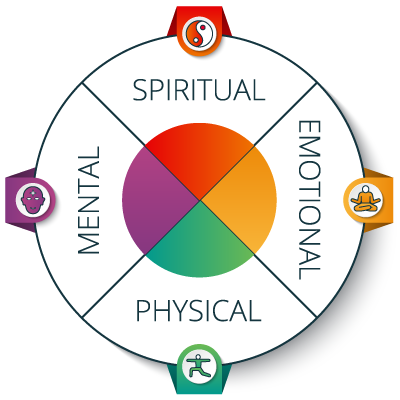
The Emotion Code (and Body Code) take a holistic approach, addressing the mind, body, emotions, and spiritual aspects of an individual.
Taking a holistic approach to well-being involves nurturing all four aspects—mental, emotional, physical, and spiritual. Strategies such as practicing mindfulness, maintaining healthy relationships, engaging in regular physical activity, seeking therapy, and practicing self-care and self-compassion can all contribute to a balanced and interconnected sense of well-being. Remember that each person’s well-being journey is unique, and finding a balance that works for you is essential for overall health and happiness.
As a Shaman, I am also a spiritual healer; I am a conduit between the physical and spiritual worlds. If you suspect a spirit or entity is attached to you, interfering with your life, or living in your home, I can help. You don’t need a dramatic exorcism like you see on television. The process is quite simple for those who know what they are doing.
2. Emotional Release And Healing
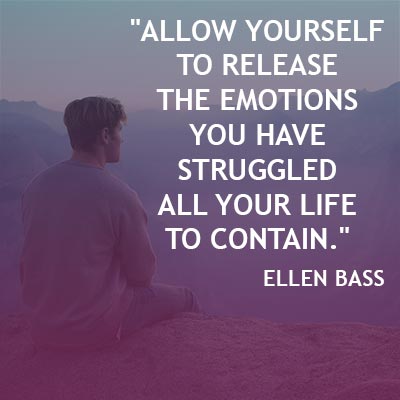
Emotional release is the inevitable outcome of clearing trapped emotions weighing you down.
The primary goal of the Emotion Code is to release trapped emotions, which contribute to emotional distress, relationship issues, and even physical symptoms. Releasing these emotions can lead to a sense of emotional relief, healing, and increased emotional resilience.
Emotional release refers to the process of allowing and expressing suppressed or pent-up emotions in a healthy and constructive way. It involves letting go of emotional tension, stress, and negative feelings that have been stored within the body and mind.
The goal of emotional release is to promote emotional well-being, reduce psychological distress, and enhance overall mental and physical health.
Key Aspects of Emotional Release:
- Expression of Suppressed Emotions: Emotional release involves acknowledging and giving space to emotions that might have been ignored, denied, or suppressed due to various reasons, such as societal norms, cultural expectations, trauma, or personal discomfort.
- Physical and Energetic Manifestations: Emotional release can manifest as physical sensations, such as tension, tightness, or a knot in the stomach, as well as through changes in breathing patterns or energy levels. These sensations are often associated with specific emotions.
- Catharsis: Catharsis is a term used to describe the emotional relief that comes from expressing and releasing deeply held feelings. It’s like an emotional cleansing process that can provide a sense of relief and liberation.
- Various Modalities: Emotional release can occur through an Emotion Code Healing and/or through a variety of activities, such as talking openly about feelings with a trusted friend or therapist, engaging in creative outlets like art or writing, practicing mindfulness and meditation, participating in body-based therapies like yoga or massage, and even through physical activities that allow for exertion and energy release.
- Supportive Environments: Creating a safe and supportive environment is crucial for effective emotional release. Having a trusted friend, family member, or therapist to talk to can make the process more comfortable and beneficial.
- Healing and Growth: Emotional release is often seen as a step toward healing and personal growth. By allowing emotions to surface and be expressed, individuals can work through unresolved issues, trauma, or difficult experiences, ultimately leading to a sense of empowerment and positive transformation.
- Release of Tension: Emotional release can have a tangible impact on the body and mind. Releasing pent-up emotions can reduce physical tension, ease stress-related symptoms, and contribute to better mental clarity and emotional stability.
- Prevention of Emotional Suppression: Engaging in regular emotional release practices can help prevent the accumulation of suppressed emotions, leading to better emotional regulation and improved overall emotional well-being.
It’s important to note that emotional release is a personal process, and there is no one-size-fits-all approach. What works for one person may not work for another. Additionally, if someone finds that their emotions are consistently overwhelming or impacting their daily life, seeking professional help from an Emotion Code Practitioner and/or therapist or counsellor is recommended to ensure emotional well-being and proper guidance through the process of emotional release.
3. Enhanced Emotional Awareness
The Emotion Code encourages individuals to become more aware of their emotional landscape. This heightened awareness can help individuals understand their emotional triggers, patterns, and responses, enabling them to make more conscious and empowered choices.
Cultivating emotional awareness is a transformative process that involves developing a deep understanding of your own emotions, their triggers, and their impact on your thoughts, behaviours, and overall well-being. This is the foundation for Cognitive Behavioral Therapy (CBT) which can help immensely as a complement to Emotion Code healing work.
By enhancing your emotional awareness, you can navigate your emotions more effectively, make conscious choices, and build healthier relationships with yourself and others. Here’s a list to help you cultivate emotional awareness:
-
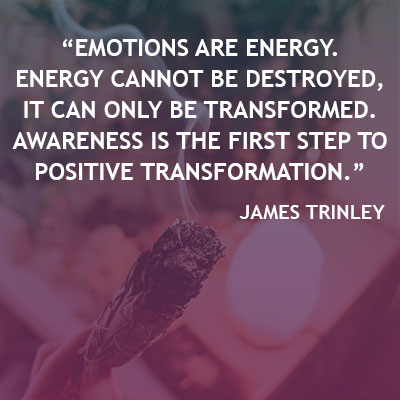
Become aware of the emotion. Feel the emotion. Label the emotion. Transform the emotion.
Practice Mindfulness: Mindfulness involves being fully present in the moment without judgment. Dedicate time each day to practice mindfulness through meditation, deep breathing, or simply paying attention to your sensations, thoughts, and emotions. This practice helps you become more attuned to your emotional experiences. Many people are embracing mindfulness and yoga in their lives to counterbalance the overactive mind and emotional turbulence.
- Label Your Emotions: Give names to your emotions as you experience them. Start with basic emotions like joy, anger, sadness, and fear. As you become more comfortable, try to identify more nuanced emotions such as contentment, frustration, or anxiety. This labelling process increases your awareness of what you’re feeling.
- Keep a Journal: Maintain an emotional journal to track your daily emotional experiences. Write down how you feel, what events triggered those emotions, and how you responded. Over time, patterns and triggers may emerge, helping you understand your emotional landscape better.
- Reflect on Past Experiences: Reflect on significant events or experiences in your life that have evoked strong emotions. Consider how those emotions influenced, and are maybe still influencing your thoughts, behaviours, and decisions. This reflection can provide insights into recurring emotional patterns. Although recurring emotional patterns like this are not included in the Emotion Code, I have added them to my toolbox calling them “Emotional Loops”, which can be cleared in the same way as a regular trapped emotion.
- Engage in Self-Check-Ins: Regularly check in with yourself throughout the day. Pause and ask, “How am I feeling right now?” This practice helps you stay connected to your emotions in real-time, preventing them from being suppressed or ignored. If your parents never checked in with how you are “feeling” it is that much more important to practice this as an adult. Parents that ignore their child’s emotions will often become adults that ignore their own emotions.
- Notice Physical Sensations: Emotions often manifest as physical sensations in the body. Pay attention to these sensations when you’re experiencing an emotion. For example, anxiety might be accompanied by a tight chest or rapid heartbeat. Connecting these sensations to emotions enhances awareness.
- Observe Triggers: Identify situations, people, or environments that consistently trigger certain emotions. Understanding your triggers allows you to anticipate emotional reactions and respond more consciously.
- Practice Empathy: Extend your emotional awareness to others. Pay attention to their verbal and nonverbal cues to understand their emotional states. This practice enhances your emotional intelligence and strengthens relationships.
- Seek Feedback: Ask close friends, family members, or trusted individuals for feedback on how you express emotions. They may offer insights into aspects of your emotional awareness that you might not have noticed.
- Embrace Uncomfortable Emotions: Emotional awareness includes being open to uncomfortable emotions like sadness, shame, anger, or fear. Avoiding these emotions when they arise increases their likelihood of getting trapped in the body and can hinder your growth. Instead, explore them with curiosity, compassion, and patience.
- Practice Self-Compassion: Treat yourself with kindness, patience, and understanding when you experience challenging emotions. Avoid self-criticism and recognize that emotions are a natural part of being human. Compassion starts with oneself and then radiates out to others.
- Seek Professional Help: Do you get triggered easily or become emotionally reactive with other people? If you find that your emotions are consistently overwhelming or interfering with your daily life or relationships, the Emotion Code can help.
Cultivating emotional awareness is an ongoing journey that requires patience and self-reflection. As you become more attuned to your emotions, you’ll develop a greater sense of emotional intelligence, allowing you to respond to life’s challenges with greater clarity and emotional resilience.
4. Greater Emotional Resilience
Releasing trapped emotions can contribute to emotional resilience, enabling individuals to cope better with life’s challenges and setbacks. This resilience may result from the decreased emotional baggage that can weigh people down.
Emotional resilience refers to the ability to adapt and cope effectively with life’s stressors while maintaining emotional well-being. Developing emotional resilience can help you navigate life’s ups and downs with greater ease. Here are some strategies to increase your emotional resilience:
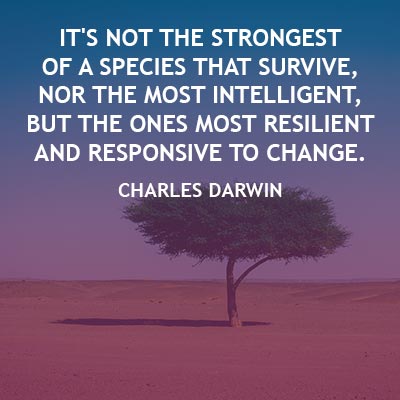
One of the benefits of Emotion Code healing is that you can become better equipped to deal with emotional turbulence in the present moment, rather than react from past emotions and experiences.
- Build Strong Relationships: Cultivate a support network of friends, family, and mentors who can offer guidance, understanding, compassion, and encouragement during tough times.
- Practice Self-Care: Prioritize self-care activities that promote physical, emotional, mental, and even spiritual well-being, such as exercise or yoga, healthy eating, sufficient sleep, and relaxation techniques.
- Develop Healthy Coping Strategies: Learn effective ways to cope with stress, such as mindfulness, deep breathing, meditation, journaling, or engaging in creative activities.
- Positive Self-Talk: Challenge negative self-talk and replace it with positive and realistic self-statements. This can help you build a more resilient and optimistic mindset. If you have trouble with this, the Body Code can replace negative or limiting beliefs in your subconscious mind with positive and empowering ones. Cognitive Behavioural Therapy (CBT) is also effective in bringing awareness to your thoughts, emotions, and actions.
- Foster Flexibility: Embrace change and uncertainty as opportunities for growth rather than threats. Develop the ability to adapt your plans and expectations when circumstances change.
- Set Realistic Goals: Break down larger goals into smaller, achievable steps. Celebrate your progress along the way, which can boost your confidence and sense of accomplishment. Use the SMART goals template: Specific, Measurable, Achievable, Relevant, and Time-Based.
- Practice Gratitude: Instead of focusing on what you don’t have, focus and practice gratitude with the positive things, characteristics, and relationships you do have. Some people find it beneficial to have a “gratitude journal” to list everything they are grateful for before bed each night. This can help shift your perspective and enhance your emotional resilience.
- Don’t Compare With Others: This is a big one at this point in time due to the rise of social media. With Facebook and Instagram, we get a glimpse into the lives of others, and we may feel emotions such as jealousy or envy. Remind yourself that everyone is on their own path and people only post the positive things in their lives and you have no idea what may really be going on with them outside of the internet.
- Don’t Be A People Pleaser: There is a quote that says “If you try to please everyone, you end up pleasing no one”. If you have a tendency to people please, you may often feel emotions of resentment, anger and anxiety. You may constantly try to be seen as helpful and high-achieving, which can lead to burnout in your career and at home. You also might find yourself hiding your true feelings, and this can be very isolating.
- Avoid Emotional Perfectionism: Those who exhibit emotional perfectionism often strive for an idealized emotional state where they expect themselves to constantly feel positive emotions, such as happiness, joy, or contentment while avoiding or suppressing negative emotions like sadness, anger, or anxiety. By suppressing the “negative emotions” they build up and eventually explode.
- Accept Imperfections: Embrace the idea that perfection is not attainable, and mistakes are a natural part of life. Practice self-compassion and avoid being overly self-critical. Every problem, loss, or failure is a learning lesson.
- Maintain Perspective: When faced with challenges, try to view the situation from a broader perspective. Ask yourself how important the issue will be in the long run and remember that everything is temporary.
- Learn from Adversity: Reflect on past challenges and consider what you learned from them. Find the silver lining in everything. This can help you build resilience by finding meaning in difficult experiences.
- Seek Professional Help: If you’re struggling with building emotional resilience on your own, it could be that you are overwhelmed with what you’re facing. An Emotion Code Practitioner can help to clear trapped emotions and traumas to help unburden your load allowing for relief, insights, and clarity to arise. If you have a heavy trauma, it might also be beneficial to have a therapist or counsellor who can help you integrate the Emotion Code healings and provide tools and strategies tailored to your needs.
- Engage in Activities You Enjoy: Participate in hobbies and activities that bring you joy. Engaging in enjoyable experiences can help buffer the effects of stress and enhance your overall well-being. Also, surrounding yourself with people who have similar interests can add beneficial social dynamics to your life.
- Develop Emotional Awareness: Pay attention to your emotions and how they impact your thoughts and behaviours. Developing emotional intelligence can help you manage your emotions effectively. As it’s said, “Control your emotions, don’t let them control you”. This can be very challenging for some people, especially if they get triggered.
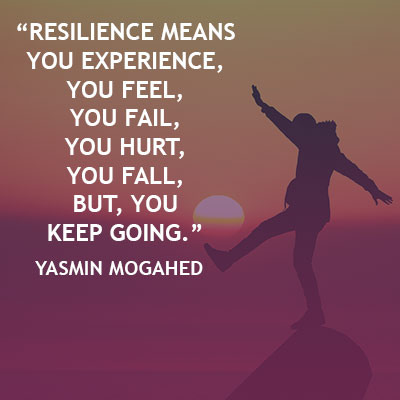
Emotional resilience is developed from life experiences. Focus on the benefits of life’s challenges and transform the pain into compassion, rather than anger.
From my experience, there are usually two or three components to getting triggered; one, there is usually an external condition that initiates the process, then two, it triggers the past trauma, then three, a cascade of negative emotions follow.
For example, when I was bullied in school they would often laugh at me and, later in life, when I heard random people laughing as I walked down the street I would get triggered thinking they were laughing at me and then trapped emotions of panic and anger would surface. When something like this happens it can “hijack” the logical mind and cause highly charged emotional responses which makes it very difficult to have emotional awareness in that moment. I felt like I tried everything to overcome these traumas but it wasn’t until I found the Emotion Code and healed myself that I was able to walk down the street and smile at people who were laughing and having a good time.
Emotion-based energy healing aims to release emotional energy that may be causing emotional distress or holding individuals back from fully experiencing positive emotions. Clearing trapped emotions can help reduce stress, increase awareness, improve coping strategies, create a more positive mindset, and enhance self-compassion, which all lead to greater emotional resilience.
Remember that building emotional resilience is a gradual process. It involves consistent practice and a willingness to learn and grow from life’s challenges. Over time, these strategies can help you become more emotionally resilient and better equipped to navigate the complexities of life.
5. Personal & Emotional Empowerment
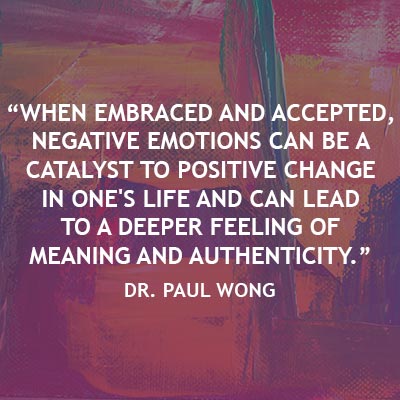
Personal and emotional empowerment is a benefit of Emotion Code Healing and learning to transform negative emotions into something positive, like art.
The Emotion Code is a type of emotion-based energy healing that encourages individuals to take an active role in their healing process. This sense of empowerment can lead to increased self-confidence, self-awareness, and a greater sense of control over one’s emotional well-being.
Personal empowerment refers to the process of taking control of one’s life, making choices, setting goals, and developing the self-confidence and self-efficacy needed to achieve those goals. It involves recognizing and utilizing one’s own strengths, abilities, and resources to overcome obstacles and create a life that aligns with one’s values and aspirations. Personal empowerment is a fundamental aspect of personal development and well-being.
Emotional empowerment refers to the process of gaining control over one’s emotions, understanding them, and using them as a source of strength and resilience in a healthy way. It involves developing a deeper awareness of your emotions, managing them effectively, and harnessing their potential to enhance your overall well-being and decision-making. Emotional empowerment allows individuals to take charge of their emotional experiences and use them as tools for personal growth and positive change.
Personal and emotional empowerment are intricately linked. Working towards personal and emotional empowerment, and doing the inner work, can lead to discovering your life purpose. Discovering and living in alignment with your life purpose can bring about numerous benefits, both in terms of your mental and emotional well-being and your overall life satisfaction. There is also a spiritual component to finding your life purpose as it is often provides a feeling of working towards something that is bigger than yourself.
Key components of personal and emotional empowerment include:
- Self-Awareness: Personal empowerment begins with self-awareness. This involves understanding your strengths, weaknesses, values, beliefs, and goals. It’s about knowing who you are and what you want in life, and how that aligns with your life purpose.
- Emotional Awareness: Emotional empowerment beings with recognizing and acknowledging your emotions without judgment. This involves understanding the nuances of different emotions and how they manifest in your thoughts, behaviours, and physical sensations.
- Self-Efficacy: When you have personal and emotional awareness and a sense of life purpose it becomes easier to set goals, make decisions, take initiative, and back those up with healthy assertiveness.
- Emotional Regulation: Developing the skills to manage and regulate your emotions in healthy ways; This includes techniques to cope with stress, anxiety, anger, and other strong emotions without being overwhelmed by them.
- Self-Reflection: Engaging in introspection/meditation can help to explore the root causes of your emotions and uncover patterns of thoughts and behaviours that may contribute to your emotional responses. By calming the mind it’s a lot easier observe and reflect upon intense emotions and their triggers.
- Mindfulness: While self-reflection is the practice of sitting and calming the mind to attain insights of past and present thoughts, emotions, behaviours, and patterns, mindfulness is something you practice carrying with you at all times. Practicing mindfulness helps you stay present and observe present moment thoughts and emotions without being carried away by them. This can lead to better understanding and control of your emotional responses.
- Self-Compassion: Cultivating a kind and understanding attitude toward yourself, even when experiencing challenging emotions. Self-compassion involves treating yourself with the same care and compassion you would offer to a friend or loved one.
- Self-Confidence: Confidence in oneself is a critical element of personal and emotional empowerment. Self-confidence is the belief that you have the capability to handle challenges, difficult emotions, make decisions, and pursue your goals effectively.
- Empowerment Mindset: Shifting your perspective to view emotions as valuable sources of information and guidance rather than as obstacles. This mindset allows you to learn from your emotions and make better, and more informed, decisions.
- Effective Communication: Learning to express your emotions in a healthy and constructive manner, whether it’s in your personal relationships, therapy, at work, or in other social settings.
- Setting Boundaries: Recognizing your emotional limits and establishing boundaries to protect your emotional well-being. This involves saying “no” when necessary and prioritizing activities that promote positive emotions. If you are unaware of your boundaries pay attention to when you feel anger as anger is a common emotional response to someone pushing your boundaries.
- Resilience Building: Resilient individuals can “bounce back” from emotional challenges and setbacks and use them as opportunities for personal growth and to further develop their resilience. This involves learning from adversity and using it to strengthen your emotional toolkit.
- Positive Coping Strategies: Engaging in activities that promote emotional well-being, such as mindfulness, journaling, creative expression, physical exercise, and spending time with loved ones.
- Embracing Change: Embracing change and uncertainty as natural aspects of life and adapting to new situations with emotional flexibility and adaptability.
- Desire For Growth: A self-empowered individual finds motivation to continue learning, growing, and evolving both personally and professionally.

Self-awareness, self-discovery, and self-compassion create the foundation for becoming personally and emotionally empowered.
Can you think of a time when you “overreacted” in person, over the phone, or even through email? If something triggers you, or you feel a strong emotional charge, it can be beneficial to take yourself away from the situation, focus on your breath, and allow your emotions to settle before reacting. The more you practice this, the easier it becomes.
Emotions are a part of the human experience. There is nothing wrong with experiencing negative emotions as they provide feedback in certain situations. However, if you have trapped emotions, the emotions-feedback system may be overly charged and difficult to control. Emotion-based energy healing can clear the emotional triggers that make it difficult to remain calm in a triggering situation.
Personal and emotional empowerment is a dynamic and ongoing process that takes time and effort. It’s not something that happens overnight but rather a journey of self-discovery, growth, practice, and development. Through self-awareness, confidence, and action, individuals can enhance their sense of empowerment, leading to greater fulfillment, balance, satisfaction, and success in various aspects of life.
6. Alleviation Of Physical Symptoms
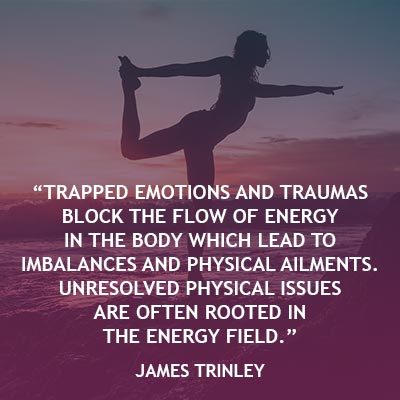
Clearing trapped emotions and traumas allows the energy to flow and the body’s own innate healing abilities to reactivate!
Unresolved emotional experiences or traumas can become trapped or stuck in the body and can contribute to physical and emotional health issues. Trapped emotions affect the flow of energy, known as Chi in Traditional Chinese Medicine. If these emotions are not cleared, they will create imbalances and eventually manifest as ailments in the physical body.
Emotions and the physical body are closely interconnected. When you experience emotions, your body can respond in various ways due to the complex interplay between your nervous system, hormonal system, and other physiological processes. Here’s how emotions can affect the physical body:
- Stress Response: Strong negative emotions, such as fear or anger, trigger the body’s “fight or flight” response. This leads to the release of stress hormones like adrenaline and cortisol, which can increase heart rate, blood pressure, and breathing rate. Muscles might tense up, preparing the body for physical action. When you’re in fight or flight all the time, it can also manifest as trauma.Trauma can be broken down into “Big T” and “Little T” trauma. “Big T” trauma is usually from one traumatic event, while “Little T” trauma is from being in fight or flight mode with smaller events but over a long period of time. For example, I was bullied during most of my years in school and every day I felt like I was in fight or flight knowing that the “bullies” could show up at any time; This created a trauma that I carried with me outside of high school and cost me thousands of dollars in therapy.
- Immune System: Negative emotions, the stress response, and the immune system are all intricately linked. As stated above, chronic stress can result in Trauma, but it can also affect the immune system. Negative emotions can have a significant impact on the immune system, primarily through the body’s stress response, which creates a vulnerability to sickness, disease, inflammation, and even impaired wound healing.
- Digestive System: Emotions can influence digestion. Stress and anxiety might lead to digestive issues like indigestion, bloating, or stomach aches. Chronic stress can also contribute to conditions like irritable bowel syndrome (IBS).
- Heart Health: Intense emotions can impact the heart. Stress hormones can lead to increased heart rate and blood pressure, which, if chronic, can contribute to cardiovascular problems over time.
- Respiratory System: Emotions can affect your breathing patterns. For example, anxiety might lead to shallow and rapid breathing, while relaxation can lead to deep and slow breathing. Conscious deep breathing can subdue negative emotions, in addition to working out or doing yoga.
- Muscle Tension: Emotions like stress, anxiety, or anger can cause muscles to tense up, often due to the fight-or-flight response. When the body and mind are in this state, it can result in chronic muscle tension which can lead to pain, headaches, and musculoskeletal disorders. Clearing trapped emotions, and other negative energy’s, reduces muscle tension and increases flexibility.
- Sleep Disruption: Emotional stress or strong emotions can disrupt sleep patterns, leading to difficulties falling asleep or staying asleep.
- Skin Conditions: Emotional stress can exacerbate skin conditions like acne, eczema, or psoriasis due to the influence of stress hormones on the skin’s inflammatory response.
- Hormonal Changes: Emotions can influence the release of hormones. For instance, positive emotions like happiness and love can lead to the release of endorphins, which are natural painkillers and mood enhancers, while negative emotions release cortisol and adrenaline which cause increased heart rate and blood pressure. Negative emotions can also impact neurotransmitters such as serotonin, dopamine, and Norepinephrine causing depression, anxiety, or triggering the fight-or-flight processes even when there is no threat.
- Energy Levels: Emotional experiences can impact your energy levels. Positive emotions can increase energy and motivation, while negative emotions can lead to fatigue and a lack of energy.
- Cognitive Function: Intense emotions, particularly stress and anxiety, can impair cognitive functions such as memory, attention, and decision-making.
- Chronic Conditions: Prolonged emotional stress has been linked to the worsening of chronic health conditions like diabetes, asthma, and autoimmune disorders.
It’s important to note that the mind-body connection is bidirectional. Just as emotions can affect the physical body, physical health can also influence emotions. Managing emotions and their effects on the body involves adopting healthy coping strategies, such as mindfulness, relaxation and breathing techniques, regular exercise, a balanced diet, adequate sleep, social support, and practicing stress reduction methods. By taking care of both your emotional and physical well-being, you can foster a holistic sense of health and balance.
Also, although there is no direct scientific evidence between negative emotions and cancer, there is ongoing research exploring the potential links between emotional states and cancer development. However, research does suggest that emotional well-being and stress management can play a role in cancer prevention, coping, and overall quality of life for cancer patients.
Cancer is a tricky subject and in accordance with the Emotion Code protocol, I am not allowed to speak much about cancer. But I can say that when the energy in the body is flowing freely it makes it that much more difficult for cancer to have a chance to develop.
7. Stress Reduction
Trapped emotions can contribute to heightened stress levels. By clearing trapped emotions, individuals will experience a reduction in overall stress, allowing them to feel more at ease and balanced in their daily lives.
The connection between stress and negative emotions is intricate and bidirectional. Stress and negative emotions often feed into each other, creating a cycle that can impact mental and physical well-being. Let’s delve into the relationship between these two factors:
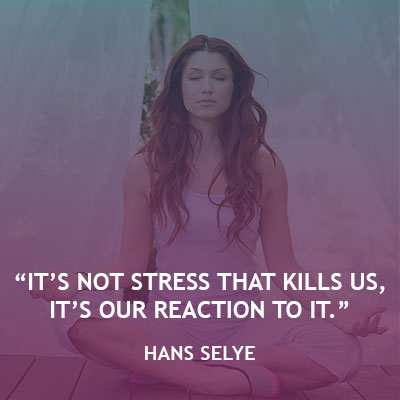
Clearing trapped emotions provides benefits by neutralizing the emotional charge of your reaction to stress.
- Stress as a Trigger for Negative Emotions: Stress, whether stemming from external pressures or internal worries, can trigger a range of negative emotions, including anxiety, frustration, irritability, and sadness. When individuals feel overwhelmed by stressors, their emotional responses can become more pronounced and may intensify over time.
- Impact on Mental Well-Being: Persistent stress can lead to negative emotions that impact mental health. Anxiety, for example, can lead to chronic worry and a heightened state of alertness, while frustration and anger might contribute to feelings of helplessness or resentment. Prolonged exposure to stress-induced negative emotions can contribute to conditions like anxiety or mood disorders.
- Physiological Responses: Stress triggers the body’s “fight or flight” response, releasing stress hormones like cortisol and adrenaline. These physiological changes can influence emotional responses. For instance, heightened stress can make individuals more prone to feeling irritable or anxious due to the increased arousal of the nervous system.
- Negative Feedback Loop: Negative emotions resulting from stress can create a feedback loop. Stress-induced negative emotions can lead to further stress as individuals grapple with the challenges of managing these feelings. This loop can lead to a cycle of increasing stress and worsening emotional states.
- Cognitive Impact: Stress can impair cognitive function, affecting memory, decision-making, and problem-solving abilities. This cognitive impact can lead to feelings of frustration, self-doubt, and even sadness.
- Physical Health Consequences: The connection between stress and negative emotions isn’t limited to the mental realm. Chronic stress and negative emotions have been linked to physical health issues such as high blood pressure, cardiovascular disease, compromised immune function, and gastrointestinal problems.
- Coping Mechanisms: Individuals often turn to various coping mechanisms to manage stress and negative emotions. Some coping strategies, such as healthy exercise, mindfulness, and seeking social support, can effectively manage stress and mitigate its impact on emotions. However, unhealthy coping mechanisms like substance use or isolation can exacerbate both stress and negative emotions.
- Breaking the Cycle: Recognizing the cycle between stress and negative emotions is crucial for breaking the loop. Developing effective stress management skills, cultivating emotional resilience, and seeking professional support when needed can help interrupt this cycle and prevent it from spiralling into more serious mental health issues.
I know from personal experience that when I would feel anxiety, it would often build on itself, eventually turning into panic. Reminding myself that “this too shall pass” immediately took the charge away from the experience. Also, over time, I was able to use the Emotion Code and Body Code to find, and clear, the root causes of my stress and anxiety.
It’s important to understand that experiencing negative emotions during times of stress is a normal human response. However, if these emotions become overwhelming, persist for extended periods, or significantly interfere with daily functioning, seeking support from a mental health professional, in addition to Emotion Code healing, is recommended.
Additionally, learning healthy coping strategies and building emotional resilience can equip individuals with tools to manage the interplay between stress and negative emotions more effectively.
8. Improved Relationships
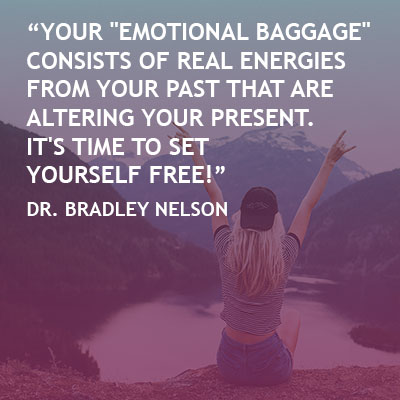
When negative emotions get stuck in the body it creates what is commonly known as “emotional baggage”.
You have probably heard someone say “that person has a lot of baggage”; this can mean a number of things depending on the person but in most cases “baggage” is from trapped emotions and/or trauma. It can also mean the person is in a lot of pain and they are projecting it on to others. The good news is that the Emotion Code and Body Code can address these issues directly.
“Emotional baggage” refers to the unresolved emotional issues, traumas, and negative experiences that an individual carries with them from their past. These can stem from childhood, previous relationships, family dynamics, personal setbacks, and more. When it comes to relationships, emotional baggage can have a significant impact.
Releasing trapped emotions can result in improved communication, reduced emotional reactivity, and a better ability to connect with oneself, and others, on an authentic level.
Below are a few examples of how emotional baggage can strain relationships:
- Trust Issues: People with emotional baggage might have trust issues due to past betrayals or hurts. This can make it difficult for them to fully trust their partner, leading to misunderstandings and strained relationships. As I described in a previous section, when I was seven years old my Dad cheated on my Mom and they ended up getting divorced. I believe that this impacted my ability to trust others, as I probably “absorbed” these feelings of distrust and betrayal from my Mother. In the Emotion Code, these are referred to as “Absorbed Trapped Emotions”.
- Communication Challenges: If someone wasn’t given the space and freedom to express their emotions as a child or experienced communication breakdowns in the past, they might struggle to express their emotions or needs effectively. I’ve heard people say “Children are to be seen, not heard”; This type of toxic mindset blocks children from developing into emotionally healthy adults.Another example is when boys are told that “real men don’t cry”. Sadness is a natural part of the human experience, whether male or female. This false belief creates fertile ground for toxic masculinity where men will transform their sadness into anger because it’s a more “manly” emotion.In many cases, our parents were never taught, or given the chance, to express their emotions as children, thereby, transferring emotional toxicity generation after generation until someone has the courage to emotionally empower themselves and fully embrace the human experience. Every emotion code healing can be looked at as an emotional empowerment!
- Insecurity and Jealousy: Emotional baggage can lead to feelings of insecurity and jealousy, especially if past relationships involved infidelity or abandonment. This can strain a current relationship by causing unnecessary conflicts out of fear of abandonment. Again, I reference my parent’s divorce as it was what I would call my “root trauma”, or life lesson. I felt insecurity, jealousy, fear of abandonment, and co-dependency in past relationships, carrying the baggage of a divorce, until I found the Emotion Code which allowed me to process and let go of all my old relational patterns and the “need” to be in a relationship.
- Fear of Vulnerability: People with emotional baggage might have difficulty being vulnerable due to fear of getting hurt again. Healthy relationships require emotional openness and sharing, so this fear can hinder the growth of the relationship.
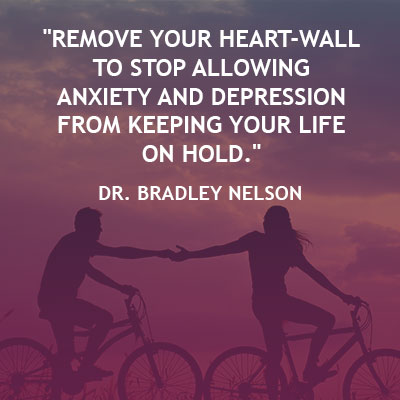
Clear your heart-wall to attract a healthy relationship or greatly improve the one you’re in!
In the Emotion Code, there is a concept known as a heart-wall. A heart-wall is created at a subconscious level and is composed of trapped negative emotions around the heart chakra. A heart-wall is created to “protect” or close off oneself from the the pains and challenges of the outside world. When someone has a heart-wall it can feel like they are on the outside looking in, rather than living from, and embracing, the vulnerability of an open heart. The heart-wall is a topic in and of itself which you can read more about here.
- Patterns of Behaviour: Unresolved issues can lead to repeating negative patterns of behaviour in relationships. For example, someone who experienced emotional neglect might seek out partners who are emotionally unavailable, perpetuating a cycle of dissatisfaction. This can also be the case with people who have experienced physical or sexual abuse, especially from other family members.People are meant to experience love from family members and if they experience abuse, at a subconscious level they may associate love with various forms of abuse depending on their situation, which is why the patterns seem to repeat in intimate relationships.Deeply rooted trauma, especially from childhood, can be very tricky to overcome. For many, alcohol and drug use seems to be the only way to alleviate the pain of past traumas. I have noticed that addictions are especially common with sexual abuse victims, due to taboos and sexual shame imposed by religions or familial conditioning.From personal experience, it wasn’t until I found the Emotion Code and Body Code that I was finally able to overcome my own traumas, with the assistance of an EMDR-trained counsellor.I am able to clear the traumas and emotions of past experiences to break the cycle, allowing trauma victims to attract and experience healthy and empowered relationships that are based on love, rather than pain.
- Difficulty Letting Go: Emotional baggage can make it hard to let go of past hurts and resentments. As long as there are trapped emotions still remaining from past experiences, there is still the memory associated with those emotions. When there are trapped emotions in the body, it can feel like an aspect of yourself is stuck in the past, not allowing you to live fully in the present moment. These lingering trapped emotions will continue to negatively affect current relationships or be the cause for attracting relationships with similar problems into your life. However, the pattern can be broken and healthy, loving, relationships are attainable!
- Emotional Withdrawal: Some people with emotional baggage might withdraw emotionally as a defence mechanism. Emotional withdrawal refers to a psychological and behavioural pattern in which an individual distances themselves emotionally from a person, situation, or relationship as a defence mechanism. It involves a deliberate or subconscious effort to avoid emotional pain resulting in reduced emotional engagement, connection, or intimacy with others.Emotional withdrawal can have negative effects on relationships, as it can lead to a breakdown in communication, a lack of emotional connection, and feelings of neglect or abandonment by others. It’s important to note that emotional withdrawal can be a sign of underlying emotional or psychological issues, such as anxiety, depression, trapped emotions, or unresolved trauma.
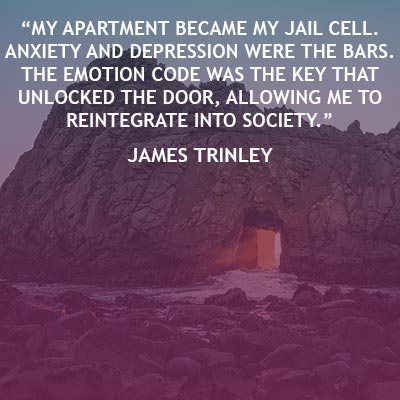
The Emotion Code is the solution to overcoming depression, anxiety, and social isolation, creating a healthier relationship with yourself and others.
Emotional withdrawal can manifest in various ways, including:
- Avoidance: The individual avoids emotional conversations, confrontations, or situations that may require them to open up or express their feelings.
- Isolation: They may withdraw physically and emotionally, isolating themselves from friends, family, or social activities. This isolation can lead to loneliness and further emotional detachment.
- Silent Treatment: In relationships, emotional withdrawal can manifest as the silent treatment, where a person stops communicating or engaging with their partner as a way to express anger, frustration, or disappointment.
- Lack of Empathy: The individual may become less empathetic and less responsive to the emotions and needs of others. They may seem indifferent or apathetic.
- Escapism: Some people resort to excessive use of substances (such as drugs or alcohol) or engage in addictive behaviours (like compulsive gaming, sex addiction, or binge-watching) to numb their emotions and avoid dealing with them.
- Defence Mechanism: Emotional withdrawal can also be a defence mechanism to protect oneself from perceived emotional threats or vulnerability. It can be a way to cope with emotional pain or trauma.
20 Ways To Deal With Emotional Baggage In Relationships:
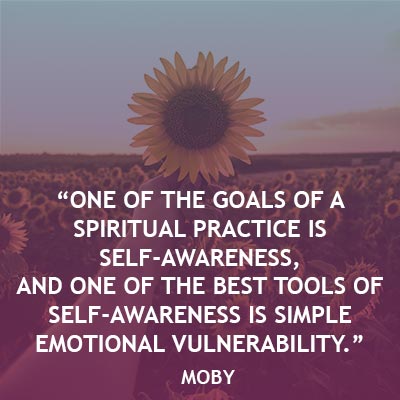
The 20 ways to deal with emotional baggage starts with self-awareness.
- Self-awareness: Recognize your own emotional baggage and its effects on your behaviour and perceptions.
- Open Communication: Foster an environment of open and honest communication. Encourage each other to share thoughts, feelings, and concerns without fear of judgment. This can foster understanding and empathy.
- Seek Professional Help: If your emotional baggage is severely affecting you and your relationships, consider seeking therapy or counselling in addition to Emotion Code energy healing.
- Practice Patience: Emotional issues can’t always be resolved immediately. Change takes time. It’s important to be patient and give each other time to process emotions and work towards resolution.
- Set Healthy Boundaries: Establish clear boundaries to prevent repeating negative patterns from the past.
- Focus on Healing: Engage in activities that promote emotional healing, such as mindfulness, journaling, and self-care.
- Let Go: Practice forgiveness and letting go of past hurts. Holding onto resentment only perpetuates the cycle.
- Active Listening: When your partner is expressing their emotions, listen attentively. Avoid interrupting and try to understand their perspective before responding.
- Empathy and Validation: Show empathy by acknowledging your partner’s emotions and validating their feelings. This doesn’t necessarily mean agreeing with everything, but it demonstrates that you respect their emotional experiences.
- Avoid Blame and Defensiveness: When discussing sensitive topics, avoid blaming each other or becoming defensive. Focus on the issue at hand rather than attacking each other.
- Use “I” Statements: Frame your concerns using “I” statements, which express your emotions and perspective without assigning blame. For example, say “I felt hurt when…” instead of “You always make me feel…”
- Take Breaks: If a conversation becomes heated, it’s okay to take a break and return to it later when emotions have cooled down. This can prevent escalating conflicts.
- Problem-Solving: Collaborate to find solutions. Instead of dwelling solely on the emotions, work together to address the underlying issues causing the emotions.
- Compromise: Relationships involve give and take. Be willing to compromise and find the middle ground to resolve conflicts.
- Reflect on Your Own Emotions: Take time to reflect on your own emotions before discussing them with your partner. This can help you express yourself more clearly.
- Seek Mutual Understanding: Strive to understand each other’s viewpoints, even if you don’t fully agree. This can strengthen the emotional connection between you.
- Apologize and Forgive: If you’ve made a mistake or hurt your partner’s feelings, apologize sincerely. Similarly, be open to forgiving your partner when they apologize.
- Quality Time: Spend quality time together to build positive emotions and strengthen your bond
- Couples Therapy: If you find it challenging to navigate emotional issues on your own, consider seeking the guidance of a professional couples therapist. They can provide neutral guidance and teach effective communication strategies.
- Create An Agreement: Just like in a business partnership, work together to write out an agreement that outlines the nature of your relationship and how to deal with specific situations as they arise.
Remember, emotions are a natural part of relationships, and experiencing a range of feelings is normal. The key is to approach these emotions with empathy, understanding, and a commitment to working through challenges together. Both partners need to be committed to personal growth and maintaining a healthy relationship. Working through emotions in relationships is essential for building understanding, trust, and intimacy. By cultivating a healthy emotional environment, you can build a stronger and more resilient relationship.
It’s important to note that when working with Emotion Code healing you can experience positive and radical changes in your life that may cause you to no longer be in alignment with your partner or friendships. If your partner is not willing, or unable, to grow with you, you may outgrow them.
There is a theory known as the Law of Attraction that suggests that like attracts like, whether positive or negative. After several Emotion Code healings, you may start to become more aware of unhealthy relationship dynamics and realize you deserve nothing less than a healthy and loving intimate relationship.
9. Increased Clarity and Improved Decision-Making
Another benefit of Emotion Code healing is increased mental clarity and improved decision-making. Emotional baggage can cloud judgment and prevent clear thinking, so releasing these emotions may lead to more thoughtful choices.
Making decisions solely based on emotional states can have both advantages and disadvantages. It’s important to strike a balance between emotions and rationality when making decisions. Here’s why making decisions exclusively from an emotional state might have drawbacks:
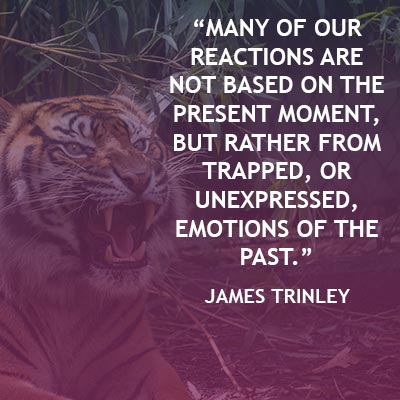
Your emotions are valid but neglecting to balance them with rational and logic can negatively affect inter-personal relations.
- Impulsiveness: Emotions can lead to impulsive decision-making without considering the long-term consequences. Acting on strong emotions without thinking through the potential outcomes can result in regrets later on.
- Bias and Distorted Perception: Intense emotions can cloud judgment and lead to biased perceptions. You might only see things from your emotional perspective, missing out on a broader view of the situation.
- Variability of Emotions: Emotions can be unpredictable and change rapidly. Decisions based solely on fleeting emotions might not hold up well when your emotional state shifts.
- Lack of Rationality: Emotions often override rational thinking. Important decisions may require careful analysis of pros and cons, which might not happen if emotions are driving the process.
- Influence of Negative Emotions: Negative emotions like anger, fear, or frustration can lead to hasty decisions driven by a desire to escape discomfort, rather than considering what’s truly best in the long run.
- Ignoring Logic: Emotional decisions might ignore logical reasoning, data, or evidence that could provide a more accurate understanding of the situation.
- Inadequate Problem-Solving: Complex problems often require a systematic and analytical approach. Relying solely on emotions might result in overlooking potential solutions.
- External Factors: Emotional decisions might be influenced by external factors like peer pressure, societal expectations, or media hype, rather than your personal values and goals.
- Limited Perspective: Emotional decisions might focus solely on your immediate needs and desires, neglecting the bigger picture and the needs of others.
- Regret and Second-Guessing: Rash decisions made in the heat of the moment can lead to feelings of regret and second-guessing, particularly if the outcomes are not as expected.
- Jumping to Conclusions: When caught up in emotions around a situation, especially uncomfortable ones, it’s easy to jump to conclusions that aren’t based on facts or accidentally blame the wrong person for something that happened.
While emotions should not be ignored when making decisions, it’s often advisable to combine them with rational thought and careful consideration. A balanced approach involves acknowledging your emotions, giving yourself time to process them, and then evaluating the situation objectively.
Reflect on how your emotions might be influencing your perspective, and strive to find a middle ground that aligns with your values and goals while also considering the practical aspects of the decision. Consulting with trusted friends, family, or professionals can provide additional perspectives that help you make more well-rounded choices.
10. Enhanced Intuition
Intuition operates in the present moment and, therefore, when you have trapped emotions and trauma from the past, it can cause mixed signals. Enhanced intuition is a benefit of Emotion Code healing because it addresses past emotions, trauma, and triggers, allowing your intuition to be based fully in the present moment.
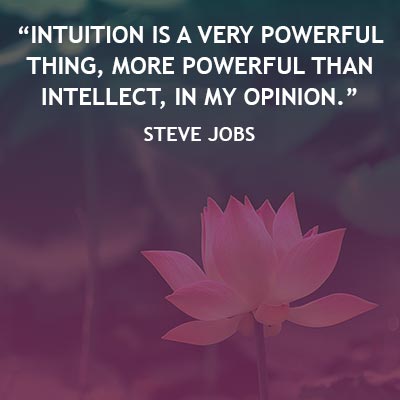
A benefit of Emotion Code Energy Healing is enhanced intuition. Refined intuition improves discernment, decision-making, and the flow of life.
The lotus flower is a great metaphor to illustrate how Emotion Code healing can improve your intuition. The lotus flower seed takes root in the soil of a murky pond. As it sprouts, it starts to grow through the muddy waters towards the surface. In this example, the muddy waters can represent trapped emotions, trauma, and other negative energies that affect most people.
However, the lotus flower transcends the murky waters of the human condition finding the light and blooming into its full potential. The bloomed lotus flower represents human potential and the ability to reside in the present moment, free of past afflictions.
To become the bloomed lotus flower is an empowered place to be as you can then fully trust and rely on your intuition and emotions to guide you in the present moment, free of past conditioning and influences.
Once you’ve freed yourself from the influences of past emotions it doesn’t mean you are free from negative emotions. Emotions, both positive and negative, are a part of the human experience and they exist for a reason.
Below is a list of ways intuition and emotions work together:
7 Ways That Emotions Can Influence Intuition
- Gut Feeling: Intuitive insights can often manifest as subtle “gut feelings” or sensations in the body. These feelings are often associated with emotions and can serve as signals that guide decision-making.
- Emotional Resonance: Intuitive responses can evoke emotional reactions. When something feels intuitively right, it can generate positive emotions like excitement, curiosity, or enthusiasm.
- Subconscious Processing: Our brains process vast amounts of information, much of which occurs at a subconscious level. Emotions can serve as a way for our subconscious mind to communicate insights to our conscious awareness.
- Prior Experiences: Emotions tied to past experiences can shape our intuitive responses. For example, if a similar situation led to a positive outcome in the past, your intuition might guide you toward a similar decision. Alternatively, your intuition may also protect you from a potentially negative outcome similar to past experiences.
- Confirmation Bias: Strong emotions can influence how you interpret intuitive signals. If you’re strongly attached to a particular outcome, your emotions might colour your interpretation of intuitive feelings to align with your desires. Strong emotions, both positive and negative, could overpower your intuition. For example, if your desire to be in a romantic relationship overpowers your intuition you may fail to consciously register relational “red flags”.
- Fear and Anxiety: Intuitive feelings can be clouded by fear and anxiety, potentially leading to misinterpretation. It’s important to distinguish between genuine intuitive signals and emotions driven by fear. For example, the fear and anxiety you feel about starting a new job usually doesn’t mean the job is not for you.
- Decision-Making: Intuitive insights can guide decisions that align with your values and desires. When you make decisions in line with your intuition, it can lead to positive emotions such as contentment and satisfaction.
- Conflict Resolution: Intuition can play a role in resolving emotional conflicts. It might guide you toward understanding the underlying issues and finding empathetic solutions. The saying “put yourself in their shoes” can help you better understand and resolve emotional conflicts with others such as lovers, friends, coworkers, or people you come across in everyday life.
- Discernment: Developing emotional intelligence and self-awareness can help you discern whether your intuitive signals are influenced by genuine insights or emotional biases.
- Mindfulness: Practicing mindfulness can help you differentiate between intuitive feelings and reactive emotions, allowing you to make more considered decisions.
- Empathetic Understanding: Emotions can enhance empathetic intuition—our ability to understand and resonate with the emotions of others, even if they’re not explicitly communicated.
Empathetic understanding, also known as being an “Empath” can be very helpful for Talk Therapists. Oftentimes people seek out talk therapy because their emotions are out of control or imbalanced. Being able to “sense” what emotion a client is feeling can empower a Talk Therapist to better help their clients work through challenging emotions. Properly labelling emotions is a big step to understanding and gaining control over them.
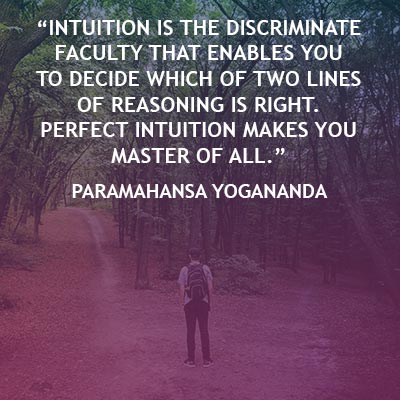
Intuition is not easy. If it were, everyone would be moving through life effortlessly. Intuition is a benefit that grows and blooms by doing the “inner work”, such as Emotion Code Healing.
Intuition is a complex mental process that combines subconscious awareness, pattern recognition, and gut feelings to make decisions or judgments in life. When intuition is balanced with logic and reasoning decision-making becomes much easier.
However, trapped emotions can cause what I call “Intuitive Interference”, which is similar to when you’re not fully on the right radio station; you can hear the song but also the interference. This makes discernment more difficult.
Clearing trapped emotions allows an individual to get back on to their radio station which allows emotions, both positive and challenging, to ebb and flow naturally. The song being played is your own unique expression in life and emotions help you discern and navigate things that are out of line with that expression.
It’s important to note that while emotions can significantly influence intuition, they don’t always lead to accurate judgments. Emotions can be irrational and biased, and intuitive judgments based solely on emotional states may not be reliable in all situations.
Effective decision-making often involves balancing emotional intuition with critical thinking, evidence-based reasoning, and objective analysis, especially in complex or consequential situations.
Being aware of one’s emotional state and its potential impact on intuition is a valuable skill in making well-informed decisions. To attain this level of intuitive clarity is a great accomplishment as it can help you navigate various aspects of life more effectively.
11. Psychic Abilities
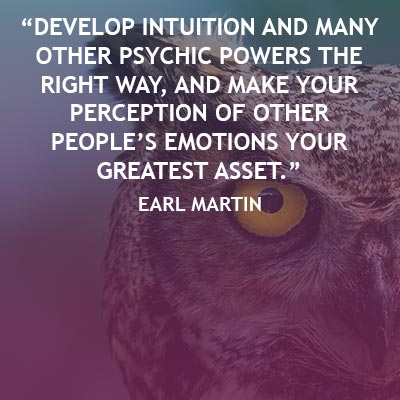
One of the benefits of Emotion Code energy healing is an increase in psychic abilities. By clearing negative emotions and energies you become more receptive and aware of the energy and information that’s always flowing through you!
In addition to enhanced intuition, another benefit of Emoton Code healing is the development of psychic abilities. Psychic abilities are an extension of intuitition. Some people believe that intuition is the ability to pull information from their own subconscious mind, while psychic abilities is about pulling information from the subconscious mind of others.
Claims of psychic abilities, such as extrasensory perception (ESP), clairvoyance, telepathy, or precognition, have been a subject of fascination and debate for a long time. While some people believe in the existence of psychic abilities, scientific evidence of their validity remains inconclusive.
However, we can see evidence of representations of psychic abilities in the artwork of ancient cultures. Ancient and current cultures around the world have painted, or sculpted, an eye on the forehead of paintings and statues of people and deities, representing the “third eye”.
The concept of the third eye has various meanings and interpretations in different cultures and spiritual traditions. It is often associated with higher consciousness, intuition, psychic abilities, and spiritual insight. Here are some of the key interpretations and representations of the third eye:
- Spiritual Enlightenment: In many spiritual traditions, the third eye is seen as a symbol of spiritual awakening or enlightenment. It represents the ability to see beyond the physical world and gain insight into deeper truths or spiritual realities (such as other dimensions).
- Intuition and Insight: The third eye is often linked to the idea of intuitive perception and inner wisdom. It is thought to provide a deeper understanding of oneself and the world, allowing individuals to have greater discernment and make wiser decisions.
- Psychic Abilities: Some people believe that the third eye is linked to psychic abilities, such as clairvoyance (the ability to see beyond the physical realm), telepathy (mind-to-mind communication), precognition (knowing future events), and other forms of psychic abilities. The third eye, in combination with the pineal gland, is seen as the source of these extrasensory perceptions.
- Pineal Gland: In the context of biology and anatomy, the third eye is sometimes associated with the pineal gland, a small endocrine gland located in the brain. Some theories suggest that the pineal gland plays a role in regulating circadian rhythms and may have a connection to spiritual experiences and consciousness.
- Chakras: In certain Eastern spiritual traditions, the third eye is associated with one of the seven chakras, specifically the Ajna chakra. This energy center is believed to govern insight, intuition, and inner vision.
- Symbolism in Art and Religion: The third eye is a common symbol in art, mythology, and religion. It can be depicted as an eye on the forehead or a pine cone and is often associated with deities, spiritual figures, or mythical creatures.
- Meditation and Spiritual Practices: Practices like meditation and yoga often emphasize the activation and opening of the third eye. Meditators may focus their attention on the area between the eyebrows, believing it can enhance their spiritual awareness and insight.
- Balance and Harmony: In some belief systems, the third eye represents balance and harmony between the physical, mental, and spiritual dimensions of a person’s existence. It signifies a state of equilibrium and inner peace.
The third eye represents the ability to see beyond what the two eyes can see. While many people actively work towards “opening” their third eye, there are also people who fear psychic abilities due to ignorance.
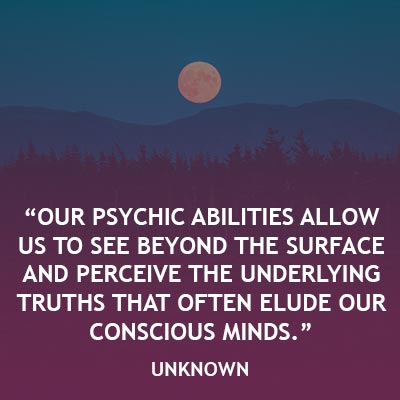
Awakening your psychic abilities is the ultimate self-empowerment as it allows you to access information, truth, and wisdom from within, rather than depending on others.
Fear of psychic abilities can stem from various sources and beliefs, depending on an individual’s perspective and experiences. People may have a negative connotation in regards to psychic abilities due to religious influences, the media, fear of the unknown, personal experiences, psychiatric concerns, generational trauma, or the assumption that all psychics are fraudulent and deceptive.
The biggest barrier to believing in psychic abilities is the lack of scientific evidence. Also, in certain religious and cultural contexts, psychic abilities may be viewed as incompatible with established beliefs and doctrines. Some religious traditions discourage or condemn practices associated with psychics and the paranormal.
When people are able to activate their psychic abilities they become empowered to think for themselves and make their own decisions without depending on religious institutions and “authorities”.
At a subconscious level many people also fear psychic abilities due to generational and cultural trauma relating to how people with psychic abilities were labelled as witches and killed or tortured in the past.
Also, especially in western countries, many people who tap into their psychic abilities are labelled as Schizophrenics.
The suppression and demonization of psychic abilities has been going on for thousands of years, enabling certain “bloodlines” to maintain power. There are many companies, organisations, and institutions that benefit from keeping people “asleep”. For example, if people were to awaken their psychic abilities en masse the Catholic Church, and similar institutions, would probably go bankrupt.
Activating your psychic abilities opens the doors for you to establish your own unique relationship with spirituality, rather than depending on others. Some of the benefits spiritual awakening include:
- Personal Insights: Everyones situation is unique. By developing your psychic abilities you can attain insights into your own life, including personal issues, decisions, and potential future outcomes. This perceived insight could lead to better self-understanding and personal growth.
- Helping Others: Psychic practitioners who claim to have abilities like mediumship or remote viewing may offer their services to help others. They might provide comfort and closure to those who are grieving, offer guidance on life decisions, or assist in locating missing persons.
- Problem-Solving: Some people believe that psychic abilities can aid in solving complex problems or making decisions by accessing information beyond ordinary sensory perception. This could be seen as a form of unconventional problem-solving or decision-making.
- Enhanced Creativity: Belief in psychic abilities might lead individuals to think more creatively, as they consider unconventional possibilities and perspectives. This enhanced creativity could be applied to various aspects of life, including artistic pursuits, problem-solving, and innovation.
- Stress Reduction: Believers in psychic abilities may find comfort and stress reduction in the belief that they can foresee or navigate future challenges with the help of their psychic insights. This perceived ability to anticipate and prepare for potential issues could lead to a greater sense of control and reduced anxiety.
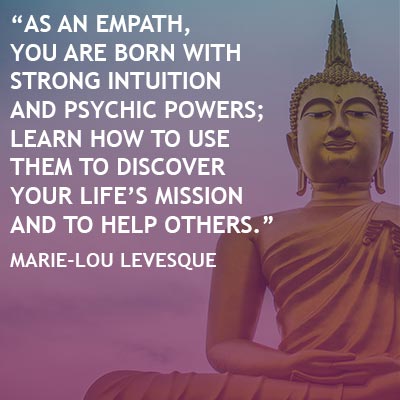
Trapped emotions will cloud your intuition and psychic abilities. The benefit of clearing trapped emotions is that it allows you to trust your present moment emotions, intuition, and psychic insights.
In order to develop psychic abilities that you can trust, the physical vehicle needs to be purified of all emotional imbalances and toxicities. By doing this, the body becomes a “channel” for information and light, similar to the concept of being fully tuned into your radio station, as discussed earlier.
There are many names for people who have these abilities: Psychic, Medium, Channel, Empath, Witch, Shaman, etc. People like this get their information directly from “Source”, “The Universe”, “Mother Earth”, or their “Higher Selves”, depending on what they believe.
Many of these people were killed in the past because they didn’t depend on the Church for their information and spiritual needs; They were considered a threat that needed to be exterminated, or controlled for the benefit of the Church’s agenda.
For example, the Catholic Church took indigenous children away from their families, forcing them to attend government-funded, Catholic-run, residential schools as a form of cultural genocide. Children who weren’t able to be assimilated were killed and buried in unmarked graves. This is just one of many examples of how the Church forced their ways and indoctrination onto others. These days many people who “wake up” are treated as being mentally ill and delusional. Read about Shamanism And Psychosis.
In the previous section, we discussed how emotionally empowered Talk Therapists can “sense”, feel, and understand the emotions of their clients and use that information to help them work through their experiences. Emotions could serve as a conduit for connecting with others on an energetic level.
6 Types Of Psychic Abilities
- Clairsentience (clear feeling): Clairsentience is the ability to perceive or sense information about people, spirits, places, events, or objects through emotions, physical sensations, or gut feelings. The ability to sense another persons emotions or pain can be beneficial in understanding what they are going through. Many of us, especially “empaths” and highly sensitive people (HPS), are clairsentient without consciously being aware of it. Many people with this ability are natural healers, therapists, and caregivers. An emotionally empowered individual has the ability to know what emotions are their own, and what emotions they are feeling or sensing from someone else.
- Clairvoyance (clear seeing): Clairvoyance is when visions past, present and future flash through the mind’s eye, or third eye, much like a daydream. Clairvoyants receive intuitive information through colours, images, visions, dreams, and symbols. Many clairvoyants are able to see spirits (or ghosts) in different dimensions. Clairvoyants are very visual people which make them good artists, photographers, decorators, and designers.
- Clairaudience (clear hearing): Clairaudience is when you can hear words, sounds, or music that others cannot. Telepathy is a form of clairaudience in which people can communicate without speaking, or hear the thoughts of others. While clairvoyance allows you to see spirits, clairaudience is the ability to speak with them. These people have enhanced auditory faculties making them gifted musicians, singers, writers, and speakers.
- Clairalience (clear smelling): Clairalience is the ability to smell odours that don’t have any kind of physical source. Some people may know when a spirit is present, as many spirits have unique scents that alert someone of their presence, such as perfume, tobacco, or incense. People with a heightened sense of smell would be great aromatherapists or testers of fragrance-based products like wine or perfume/cologne.
- Clairgustance (clear tasting): Clairgustance, or the ability to taste something non-physical, isn’t talked about as much as the other extrasensory perceptions. Similar to Clairalience, tasting a specific flavour could mean there is a specific spirit present trying to get your attention. People that have a heightened sense of taste, would make great chefs, bakers or food critics.
- Claircognizance (clear knowing): Claircognizance is when you have knowledge of people or events that you would not normally have knowledge about. I believe that Claircognizance is like intuition on steroids. People with this ability receive, or “download”, information where others would wonder “how could you possibly know that?”. An example of this would be a premonition: a forewarning of something that will happen in the future. Claircognizance requires tremendous faith because there’s often no practical or rational explanation for why you would suddenly “know” something. People with this gift make great philosophers, doctors, scientists, religious/spiritual leaders, and business leaders that can use their insights to help people and companies move in the right direction.
One of the benefits of Emotion Code healing is to enhance your psychic abilities by clearing obstacles that are in the way. There are 6 types of psychic abilities and, most likely, you have a “dominant” extrasensory perception that you were born with. Do one of the six abilities resonate most with you?
Psychic abilities are nothing to be afraid of, in fact, they are there to help you better navigate the world and your life purpose.
Emotions And Psychic Abilities
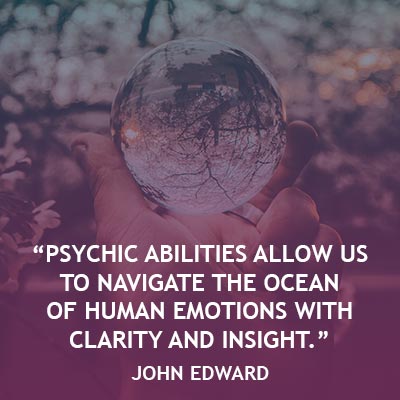
Psychic abilities are your birthright! There is nothing to be afraid of. When you are disconnected from your psychic abilities you may feel lost or lacking purpose.
The connection between emotions and psychic abilities is a topic that has been explored in various spiritual and metaphysical circles.
Some individuals believe that heightened emotional states can lead to an increased sensitivity to subtle energies or information beyond normal sensory perception. This heightened sensitivity might be associated with psychic perceptions.
On the other hand, some practitioners argue that strong emotional states, particularly negative ones like fear or anxiety, can block or distort their psychic abilities. They suggest that calmness, balance, and neutrality are conducive to accessing psychic insights.
Positive emotional states, such as joy and love, are believed by many to elevate one’s consciousness and allow for clearer access to psychic information. It’s thought that these emotions create a vibrational alignment that enhances psychic receptivity.
Emotions might influence how psychic information is interpreted. A person’s emotional state could impact the way they perceive, understand, and convey psychic insights.
Attitudes toward psychic abilities vary widely among individuals and cultures. While some people may fear or dismiss these abilities, others may embrace and believe in them. Ultimately, the acceptance or rejection of psychic phenomena often depends on personal beliefs, experiences, and the cultural, social, and educational context in which an individual is situated. However, if psychic abilities are a part of being human then why are they suppressed or forbidden?
To receive clear and reliable extra-sensory perceptions requires a purification of the physical, mental, emotional, and spiritual bodies; This is a natural benefit of Emotion Code energy healing. Trapped emotions, and other negative energies, block the flow of energy, or Chi. Clearing these blockages allows for energy to flow freely within your psychic channels.
Summary
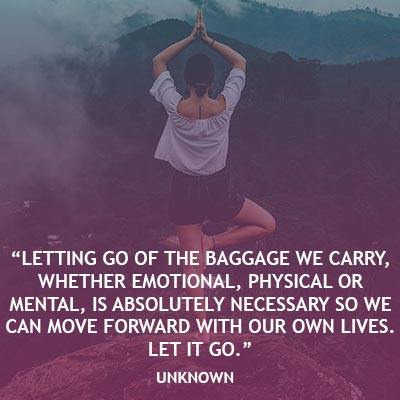
One of the greatest benefits of Emotion Code Healing is being able to clear dozens of trapped emotions in one session. This is unlike any other type of therapy.
Emotion Code Energy Healing has so many benefits! Trapped emotions in the body block the flow of energy (also known as Chi or Prana) resulting in mental, emotional, physical, and spiritual issues. Clearing trapped emotions allows the energy to flow unimpeded, which can feel like a huge weight has been released. Once the energy is flowing again it allows for the body’s own innate healing abilities to reactivate.
In the last decade, I have experimented with many modalities (both traditional and alternative) to relieve my suffering. However, it wasn’t until I found the Emotion Code that my life transformed radically. I’m not saying other modalities won’t help people, I’m simply saying that the Emotion Code was the missing element for myself and I believe it can help others immensely, as well.
Emotional baggage is real and it’s nothing to be ashamed of. Almost everyone has baggage to some degree or another, but most are not even aware of it or what it feels like to not have it. Emotions can be incredibly uncomfortable and many people project their emotions onto others in an attempt to relieve themselves of their pain and discomfort. Until people become conscious of their emotional baggage they are unlikely to seek help.
The benefits of Emotion Code healing are vast. It is truly the missing link in health care. However, although the benefits of Emotion Code energy healing are extensive, it can also be beneficial to combine Emotion Code healing with other modalities that complement it.
Below I describe the ultimate program for radical healing, personal empowerment, and transformation:
- Emotion Code & Body Code
- Talk Therapy
- Counselling
- Eye Movement Desensitization and Reprocessing (EMDR)
- Cognitive Behavioural Therapy (CBT)
- Meditation & Mindfulness
- Exercise, Yoga, Breath Techniques, Massage
Let’s break these four elements down:
1. Emotion Code & Body Code
When it comes to energy healing, from my experience, I feel that the Emotion Code and Body Code is the most comprehensive energy healing system on the planet! Whether it be trapped emotions, trauma, imbalances, or other negative energies, everything can be cleared.
When it comes to trauma I believe the Emotion Code and Body Code is the most effective and gentle. For example, I have heard many people say that simply talking about a specific trauma in Talk Therapy is often re-traumatizing, whereas, with the Emotion Code and Body Code the “energy” of the trauma, and the emotions connected to it, are fully cleared. By doing this, the person is then able to talk about the trauma in Talk Therapy without getting triggered, as the energetic and emotional charge has dissipated.
Although Emotion Code healing is gentle, it is possible to experience discomfort as trauma, or other negative energies, are brought to the surface to be cleared. After each healing, there is an integration and processing phase. The benefits of an Emotion Code session will fully manifest in time, but there are therapies that can complement the process listed below.
2. Talk Therapy
Before a negative energy is fully cleared it surfaces from the subconscious to the conscious mind which can be uncomfortable for sensitive individuals. To help integrate an Emotion Code healing it may be helpful to have a Talk Therapist to help process the uncomfortable emotions that are in the process of clearing.
Also, if I clear a trauma, a therapist who practices EMDR can provide additional assistance and support. Furthermore, a Cognitive Behavioural Therapist (CBT) can help bring awareness and mindfulness to the interplay of your thoughts, emotions, and behaviours to make positive changes in the way you react to challenging emotions.
3. Meditation & Mindfulness
Strong emotions have a way of hijacking one’s mental processes. Reacting from an emotionally charged state can cause you to jump to conclusions and say, or do, things that you might later regret.
Meditation and mindfulness are just as important as getting exercise. In Buddhism, meditation and mindfulness are referred to as “mind training” and encourage you to observe your thoughts and emotions with awareness rather than attaching to them.
By calming the mind you can take the charge away from emotions and react to situations in a more empowered and balanced way. In most cities, there are meditation groups that are inexpensive, or by donation, and there is also a great free application called Insight Timer.
4. Exercise, Yoga, & Breath Techniques
Exercise releases a multitude of “feel-good” chemicals. Among these chemicals are Myokines which have been referred to as “hope molecules” and have an anti-depressant effect. After I clear negative energies with the Emotion Code it’s beneficial to increase your heart rate and breath with exercise to get stagnant energies in the body flowing again.
Trapped emotions and negative energies can create tension in the body. Exercise, yoga, breathing exercises, and even massage therapy can provide huge benefits when combined with energy healing. If you practice yoga, observe how much your flexibility improves after only a few healing sessions.
*NOTE: If you can only afford one of the four options above, I suggest the Emotion Code and Body Code, complemented with free or inexpensive activities such as physical exercise, yoga, meditation and mindfulness (in a group or using the Insight timer App), and deep breathing. The benefits of Emotion Code Energy Healing, coupled with inexpensive meditation and exercise, provide radical and permanent positive changes in one’s life!
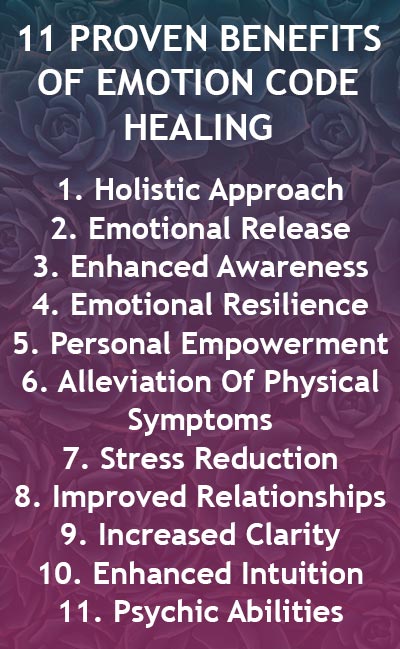
There are 11 proven benefits of Emotion Code Healing. Emotion Code (and Body Code) is the most advanced and comprehensive healing program in the world!
In this article, we discussed the 11 benefits of Emotion Code healing. The Emotion Code is an emotion-based energy healing program that is needed now more than ever. If you read my article about the Kali Yuga then you are aware of the current degenerated state of the human condition. I have yet to find anyone who doesn’t have at least one trapped emotion.
The benefits of Emotion Code energy healing include emotional release, stress reduction, enhanced emotional awareness, a decrease in depression, anxiety, and other mental health issues, improved relationships, alleviation of physical pain and tension, improved flexibility, greater emotional resilience, increased clarity and improved decision-making skills, enhanced intuition, and, for some, heightened psychic abilities.
It’s only a matter of time before the benefits of Emotion Code healing are understood, realized, and embraced by the general public. The Emotion Code and Body Code healing system is the missing link that fills all the gaps of Traditional Western Medicine.